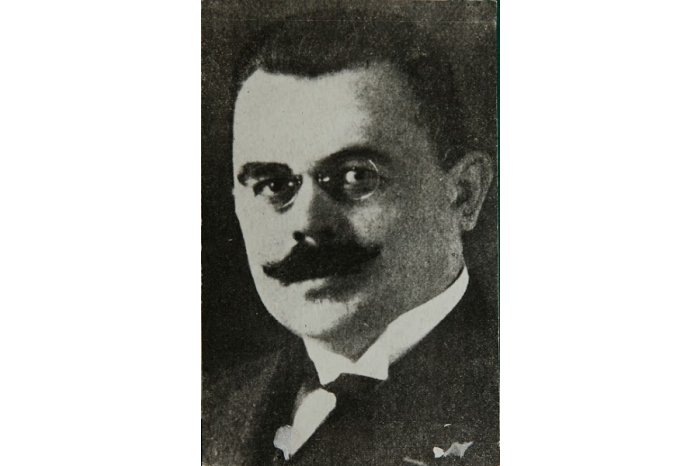Paul Gore, the greatest heraldist and last knight of Bessarabia
15:10 | 12.03.2021 Category:
One of the multivalent and erudite personalities of Bessarabia from the end of the 19th century, beginning of the 20th century was an aristocrat of old noble extract, Paul Gore, born in Chisinau on 27 July 1875. His grandfather, Spiridon Gore, worked as secretary of the Zemstvo of the Bessarabian aristocracy. He was writing a lot and in a talented way in the press of the time about the history and traditions of the Moldovans. The father of Paul Gore, Gheorghe, was an illustrious publicist, who had a big library and thoroughly knew the history of Bessarabia. He was writing about the common origin of the Moldovans with the residents of the Romanian principalities, about the common language and the tragic fate of the Bessarabians. For those times, these statements were proving not only the historical truth, but also a great courage on behalf of this publicist. He was member of the circle of young Bessarabian intellectuals, such as Stefan Gonata, Aristide Casso, brothers Leonard, brothers Suruceanu, Vladimir Herța, etc. His biography illustrates exactly not only an exemplary biography of publicist and scientist, but also a biography of a man with great dignity.
Paul Gore was the last representative of a renowned dynasty of Bessarabian scholars, which as though would show the history of Bessarabia itself.
First, young Paul Gore finished the lyceum in Nikolaev (Kherson), and then the Faculty of Law of the Sankt Petersburg University. In 1905, he became justice of the peace in the Orhei region and in the same year, Gore became head of the editorial committee of the Moldovan Society. In 1909, Paul Gore became director of the National Museum from Chisinau, where he acted till 1918. In 1910, he was elected MP of the aristocracy and deputy head of the Zemstvo. In this capacity, Gore demanded introduction of the Romanian language in schools in 1912.
During the World War I, Paul Gore became member of the Red Cross and was on front in Galicia, where he exemplarily contributed to helping wounded people. Soon, Gore became director of the Red Cross from Bessarabia.
After the Russian revolution from February 1917, Bessarabia was overwhelmed by the fever of the democratic transformations, as well as of the national revival. Paul Gore became president of the newly created Moldovan school commission and undertook a string of extraordinary measures, in order to supply a large number of national schools opened with textbooks written in the Romanian language.
Paul Gore managed to unite the Moldovan noblemen and, along with other patriots, he founded the Moldovan National Party – the nucleus of the future Country Council. On 16 May 1917, Gore was elected president of the Moldovan Cultural Society.
In the conditions of the foundation of the National Moldovan Party in Chisinau on 3 April 1917, Paul Gore (in his capacity of president) edited a study in the Romanian language titled Culorile naţionale ale românilor din Basarabia (The National Colours of the Romanians from Bessarabia), which remained manuscript. In this work, Gore was set to prove that the Bessarabians must use the Tricolor flag naturally.
The greatest achievement of Paul Gore in the heraldry sector, after the elaboration of the flag of the Moldovan Democratic Republic, was the decisive participation in the working out of the new coat of arts of Romania. In 1921, a special heraldry commission set up adopted and proposed for adoption for the legislative bodies a new representation of the coat of arms, based on the models proposed by heraldists József Sebestyén and Paul Gore. A few people presently know that Paul Gore is the co-author of the inter-war coat of arms of Romania.
Paul Gore had thorough studies in the science and art of the coat of arms; his knowledge recommended him as member of the Heraldry Council of France, International Heraldry Convention of London, Swiss Heraldry Society, Adler associations from Vienna, Herold from Berlin, Sanct Michel from Bamberg, as corresponding member of the heraldry Academy from Madrid, etc.
Paul Gore died of an incurable disease at the age of only 52 years. A fulminant career was interrupted, which left a performance hard to be outrun in the history of Bessarabia.
He was buried in the cemetery of Saint Elijah church from Chisinau, which was later on demolished together with the graves in the Soviet period. Following an exceptional contribution to the development of his nation, Paul Gore became a man without grave, as more historians described him.

